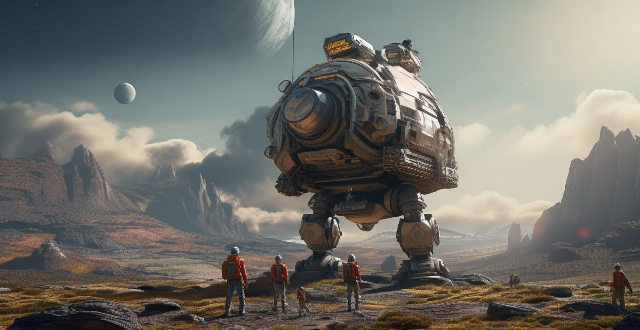Designing rockets for deep space exploration poses several challenges to engineers, including extreme conditions, long-duration missions, communication delays, limited resources, complexity of systems, safety concerns, cost constraints, environmental impact, and regulatory compliance. These challenges must be carefully considered to create effective solutions that enable us to explore our solar system and beyond.

Challenges Faced by Engineers in Designing Rockets for Deep Space Exploration
Designing rockets for deep space exploration poses several challenges to engineers. These challenges are not only technical but also logistical and financial in nature. Below are some of the key challenges that engineers face when designing rockets for deep space exploration:
1. Extreme Conditions
Rockets designed for deep space missions must be able to withstand extreme conditions such as high radiation levels, vacuum of space, and extreme temperatures. This requires the use of specialized materials and technologies that can operate effectively under these conditions.
2. Long-Duration Missions
Deep space missions often involve long durations, which means that the rocket's systems must be reliable and durable enough to function for extended periods without maintenance or replacement. This includes power systems, propulsion systems, and communication systems.
3. Communication Delays
As the distance between the rocket and Earth increases, communication delays become a significant challenge. Engineers must design systems that can operate autonomously or with minimal human intervention due to these delays.
4. Limited Resources
Rockets for deep space missions have limited resources, including fuel, power, and consumables. Engineers must optimize the design to ensure that these resources are used efficiently throughout the mission.
5. Complexity of Systems
The complexity of the systems required for deep space exploration is another challenge. These systems include navigation, guidance, control, communication, and scientific instrumentation. Each system must be carefully integrated to ensure seamless operation during the mission.
6. Safety Concerns
Ensuring the safety of both the crew (if manned) and the spacecraft is crucial. This involves designing robust safety systems, redundant systems, and emergency procedures to handle potential failures or accidents during the mission.
7. Cost Constraints
Deep space exploration missions are expensive, and budget constraints can limit the design options available to engineers. They must find ways to balance performance requirements with cost considerations to ensure that the mission is feasible within its budget.
8. Environmental Impact
Engineers must also consider the environmental impact of their designs, both on Earth and potentially on other planetary bodies. This includes minimizing waste production, using sustainable materials and technologies, and avoiding contamination of other celestial bodies.
9. Regulatory Compliance
Designing rockets for deep space exploration requires compliance with various international treaties and regulations related to space exploration. Engineers must ensure that their designs meet these requirements while still achieving their objectives.
In conclusion, designing rockets for deep space exploration is a complex process that requires careful consideration of numerous factors. Engineers must navigate these challenges to create effective solutions that enable us to explore our solar system and beyond.